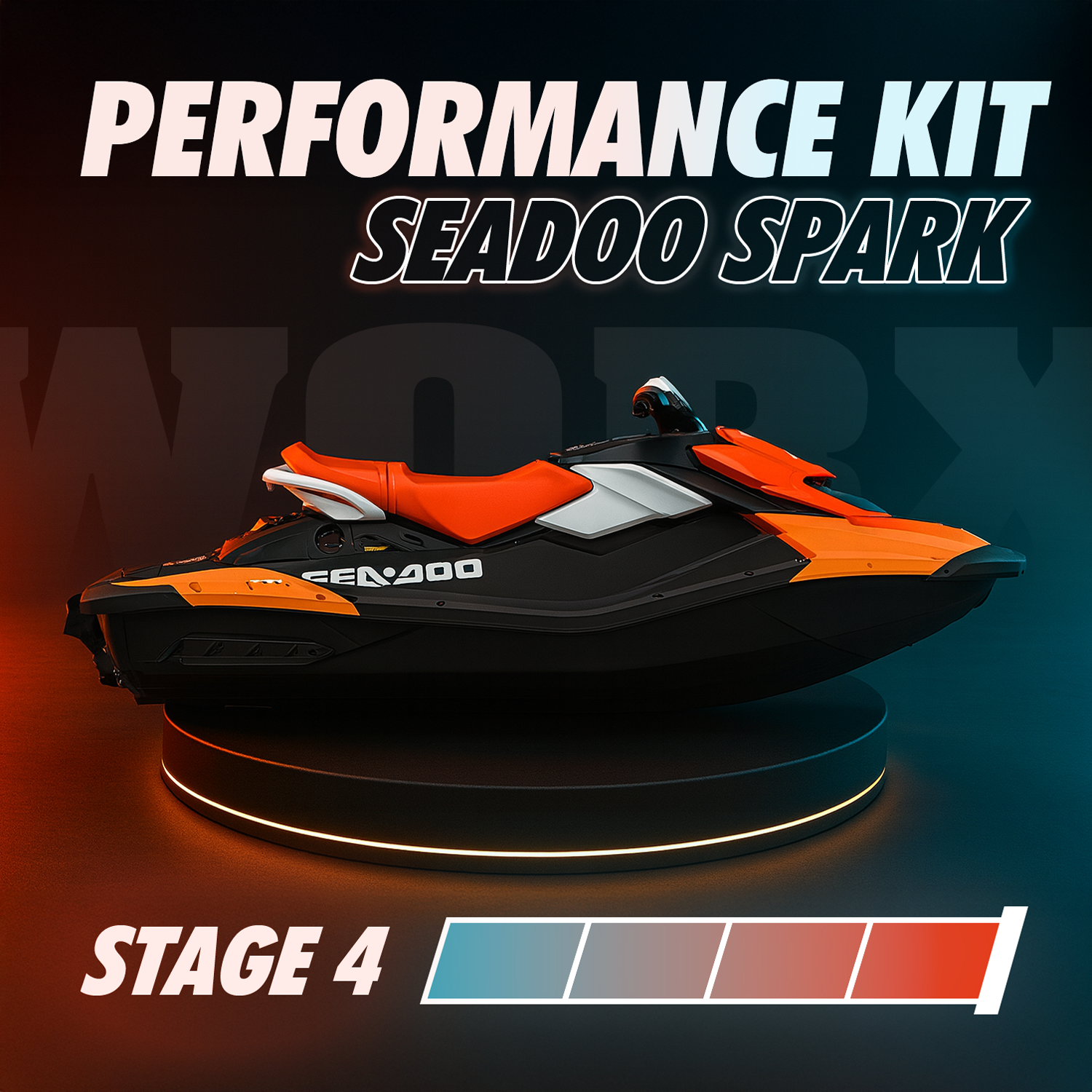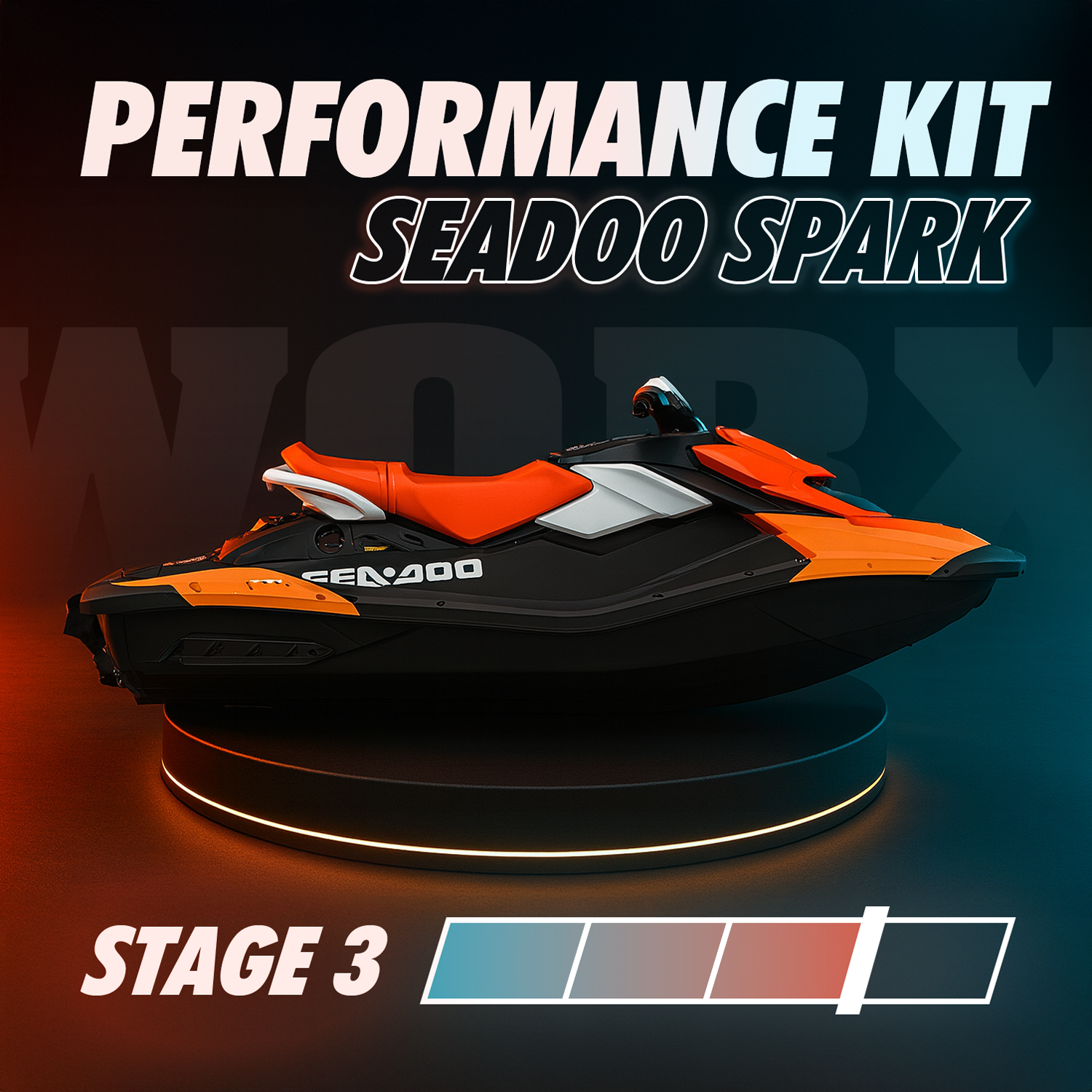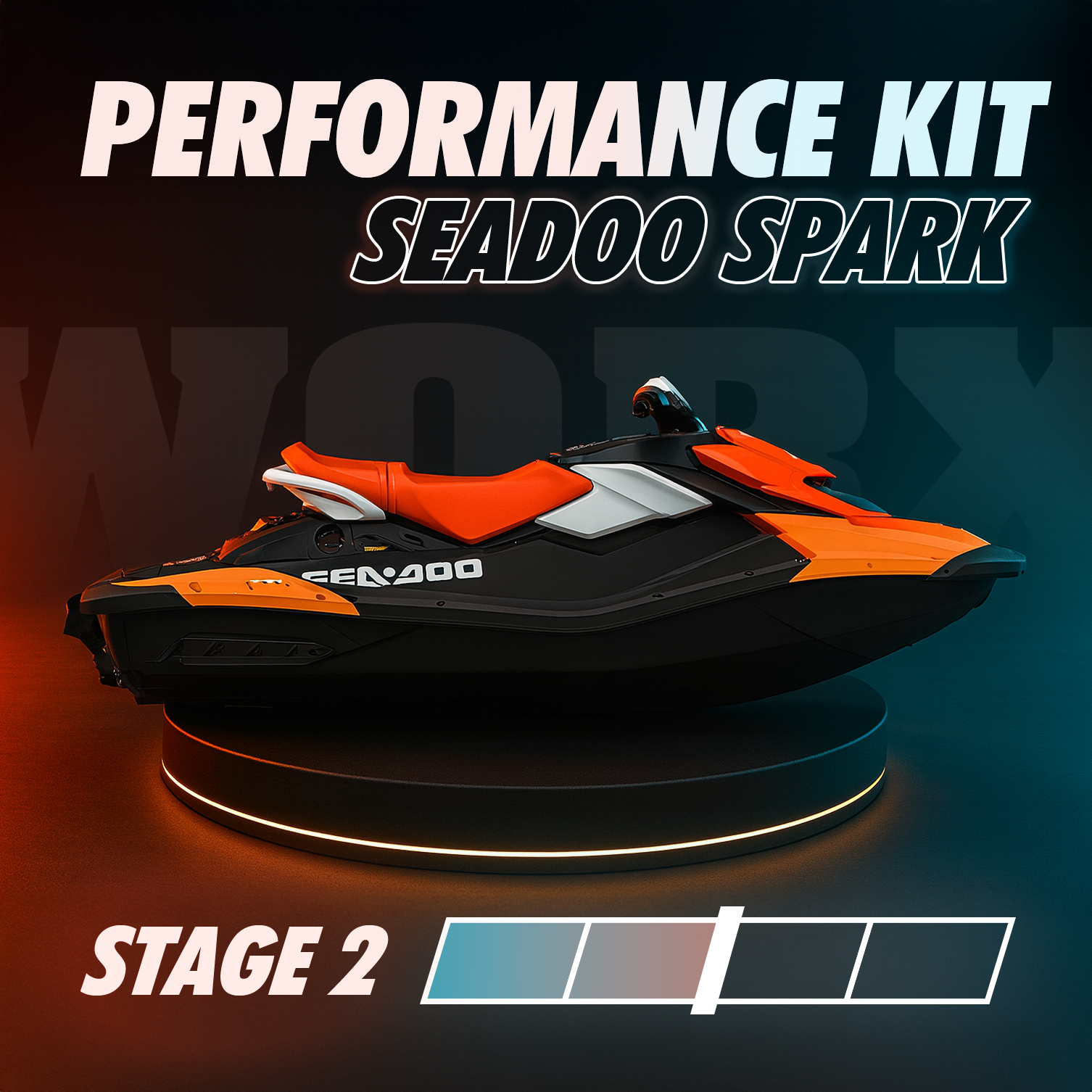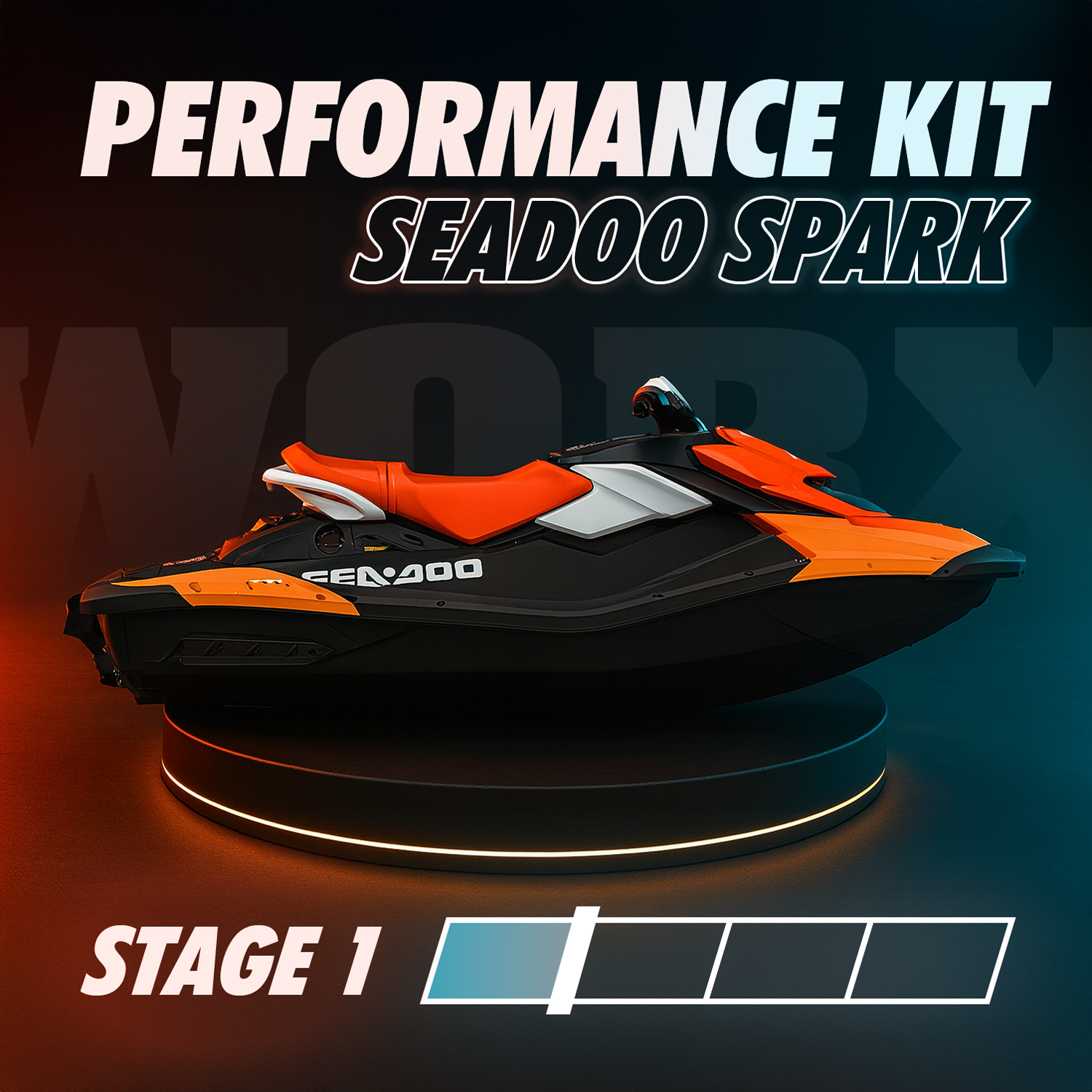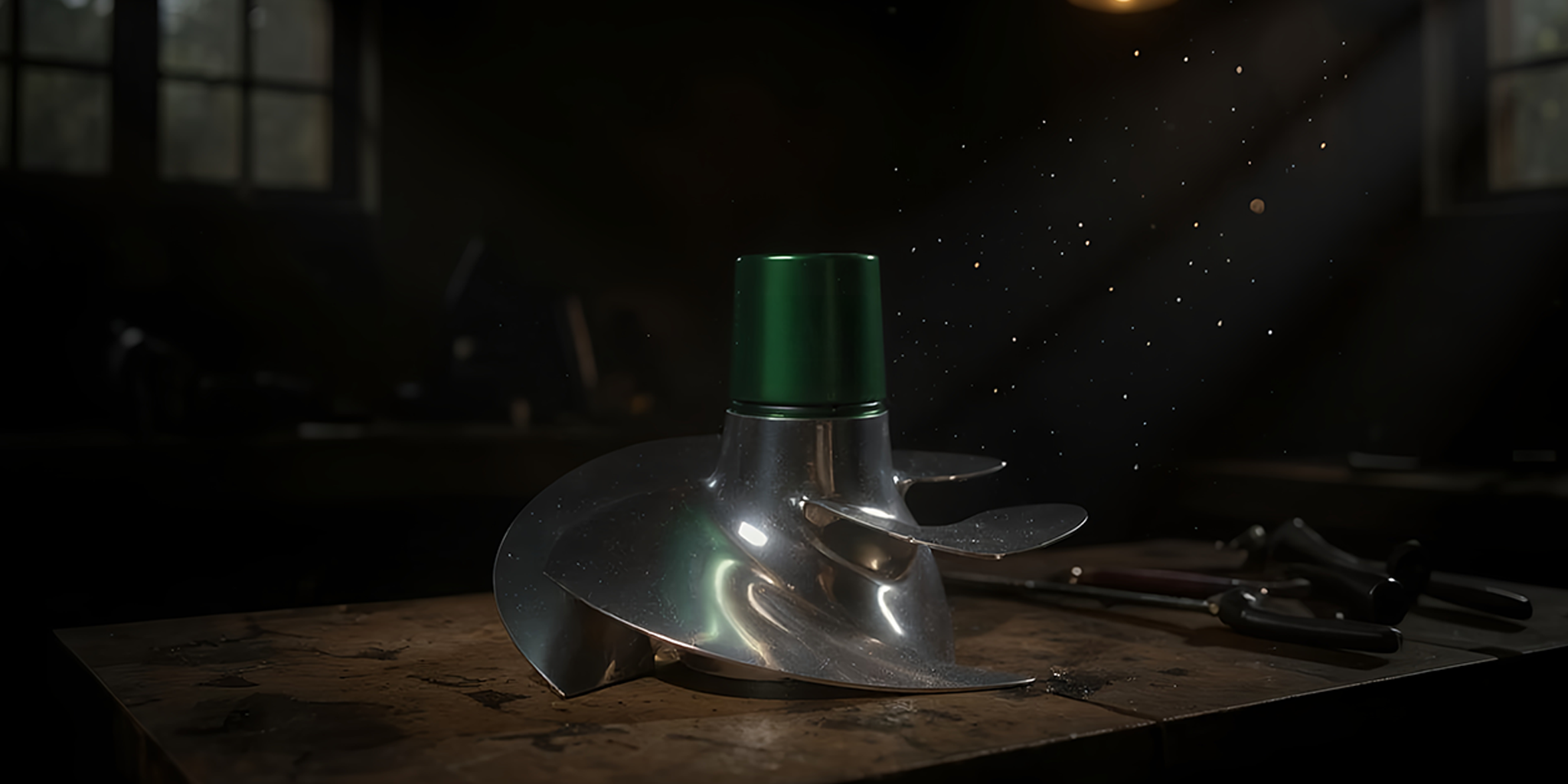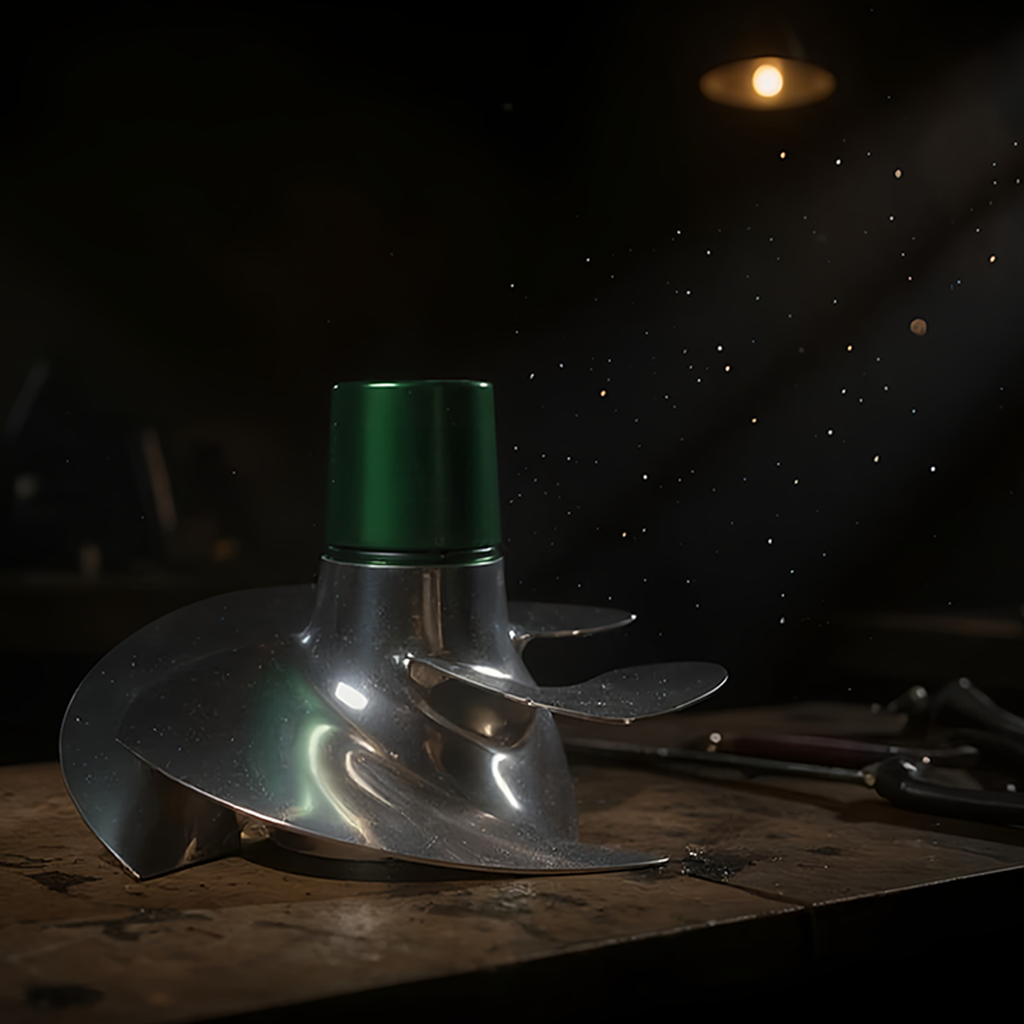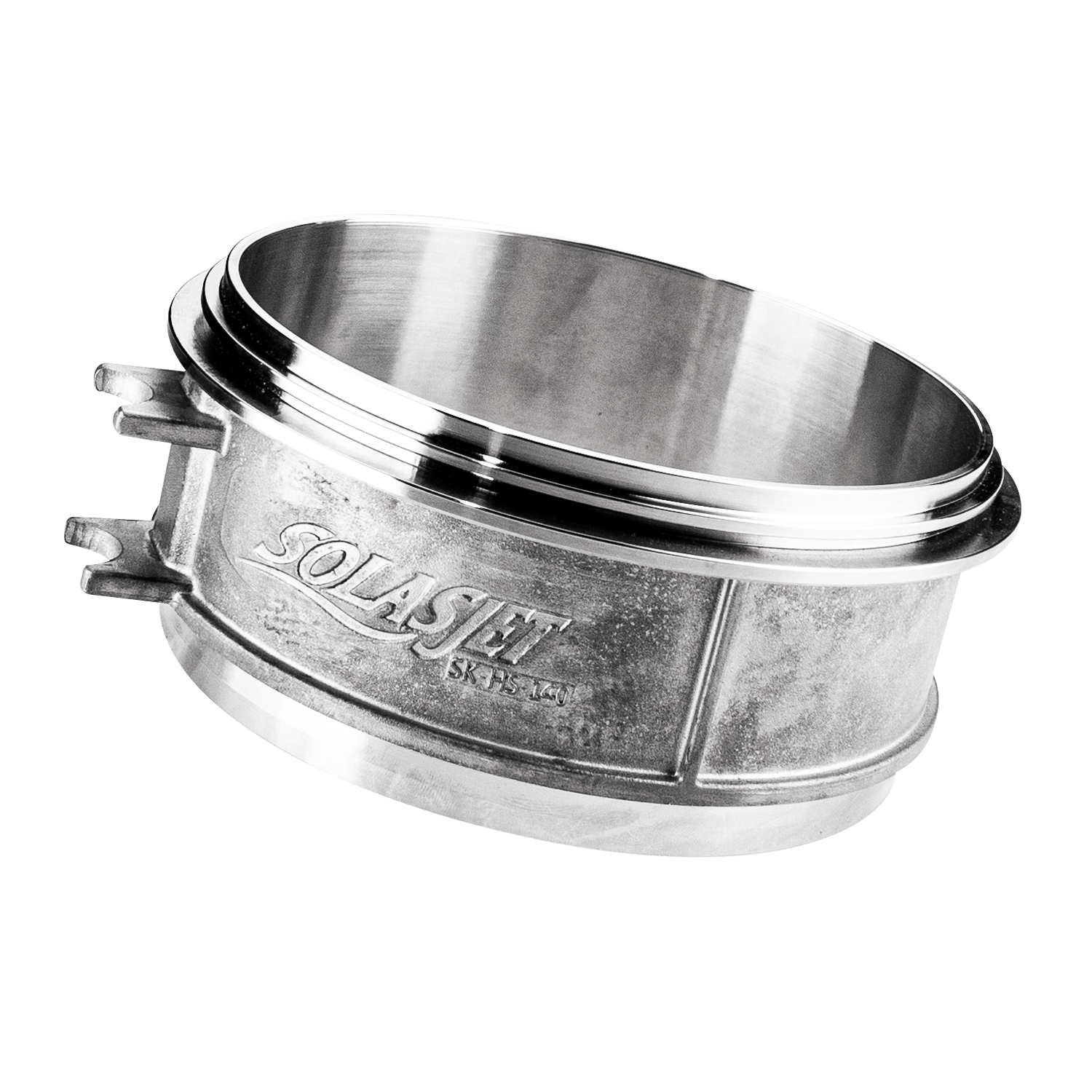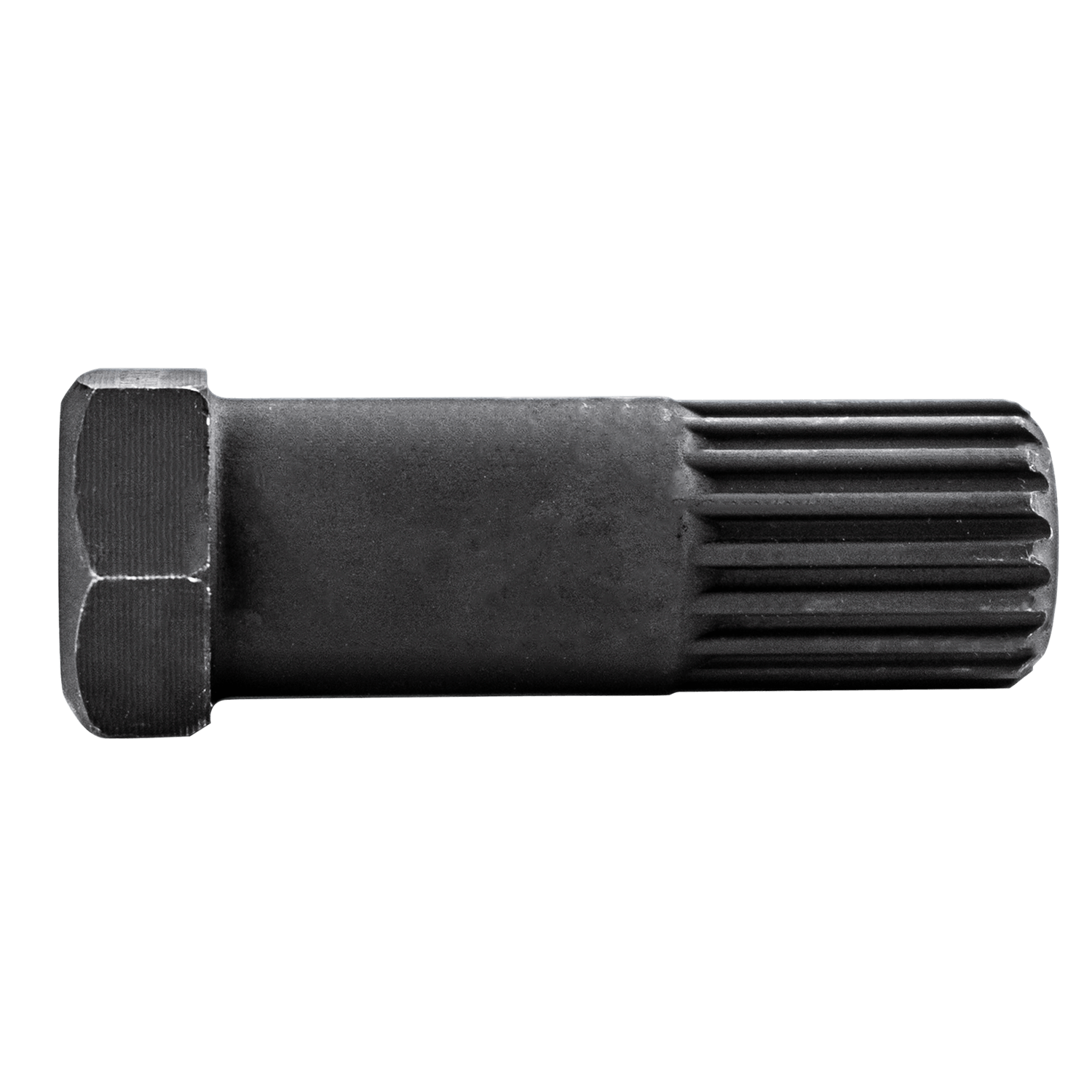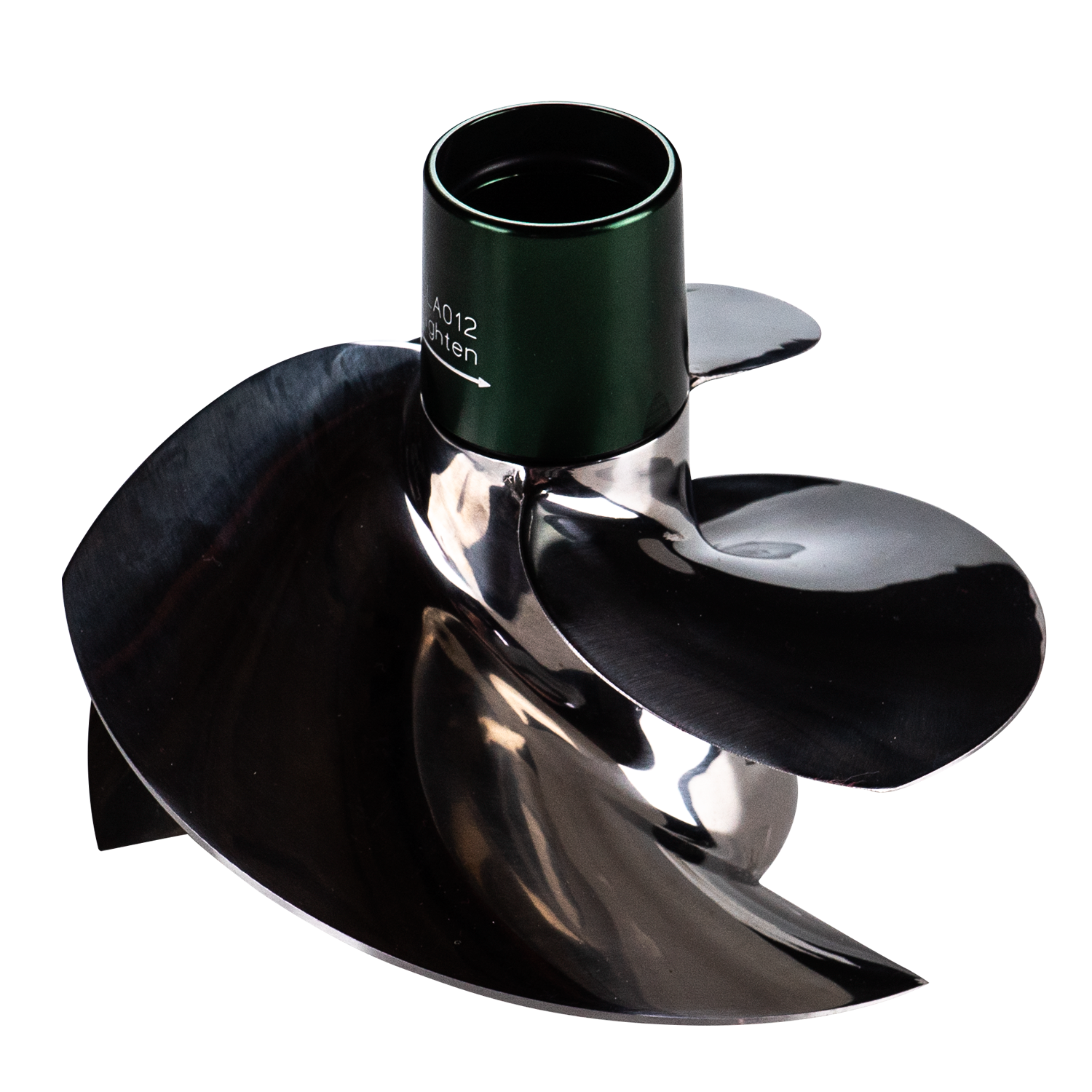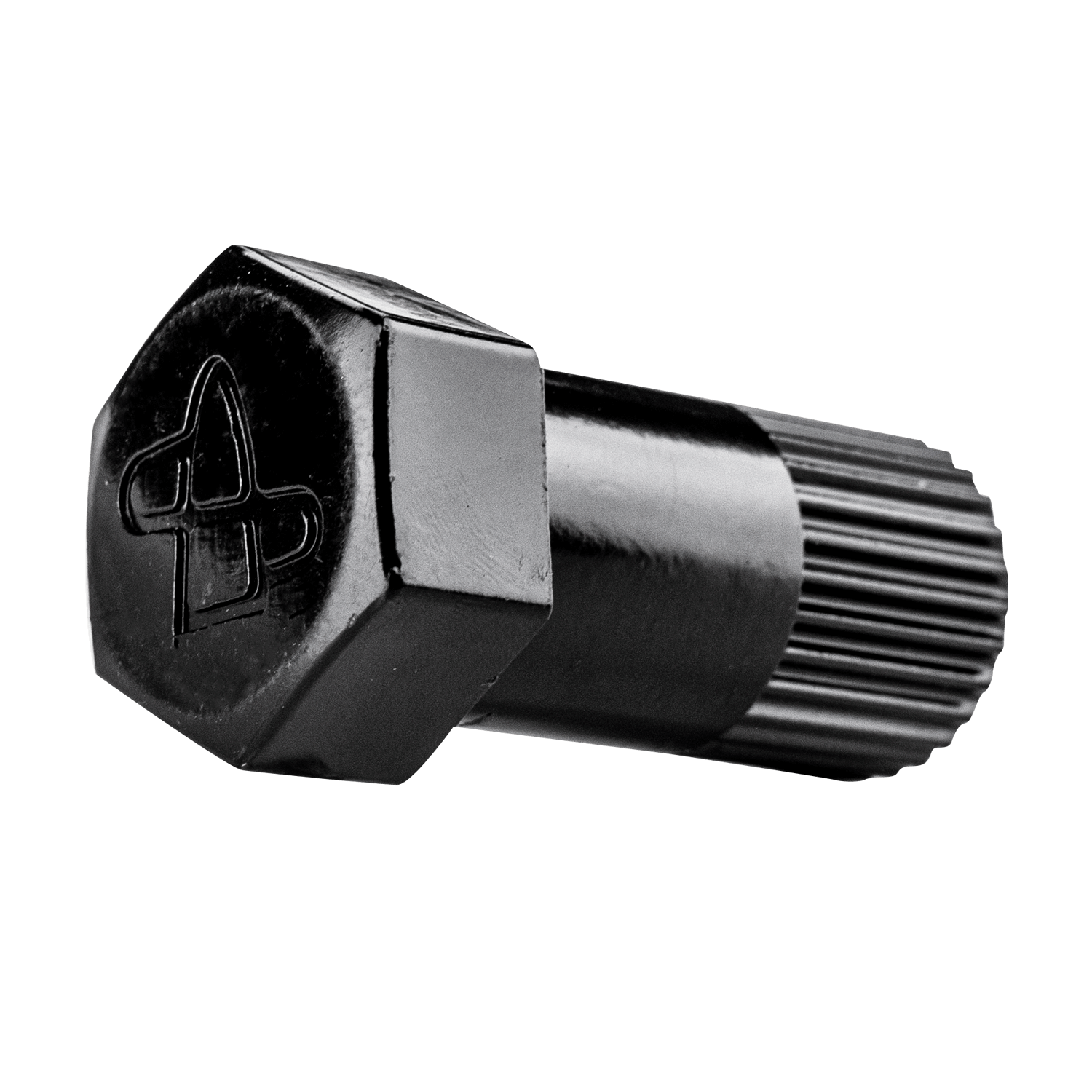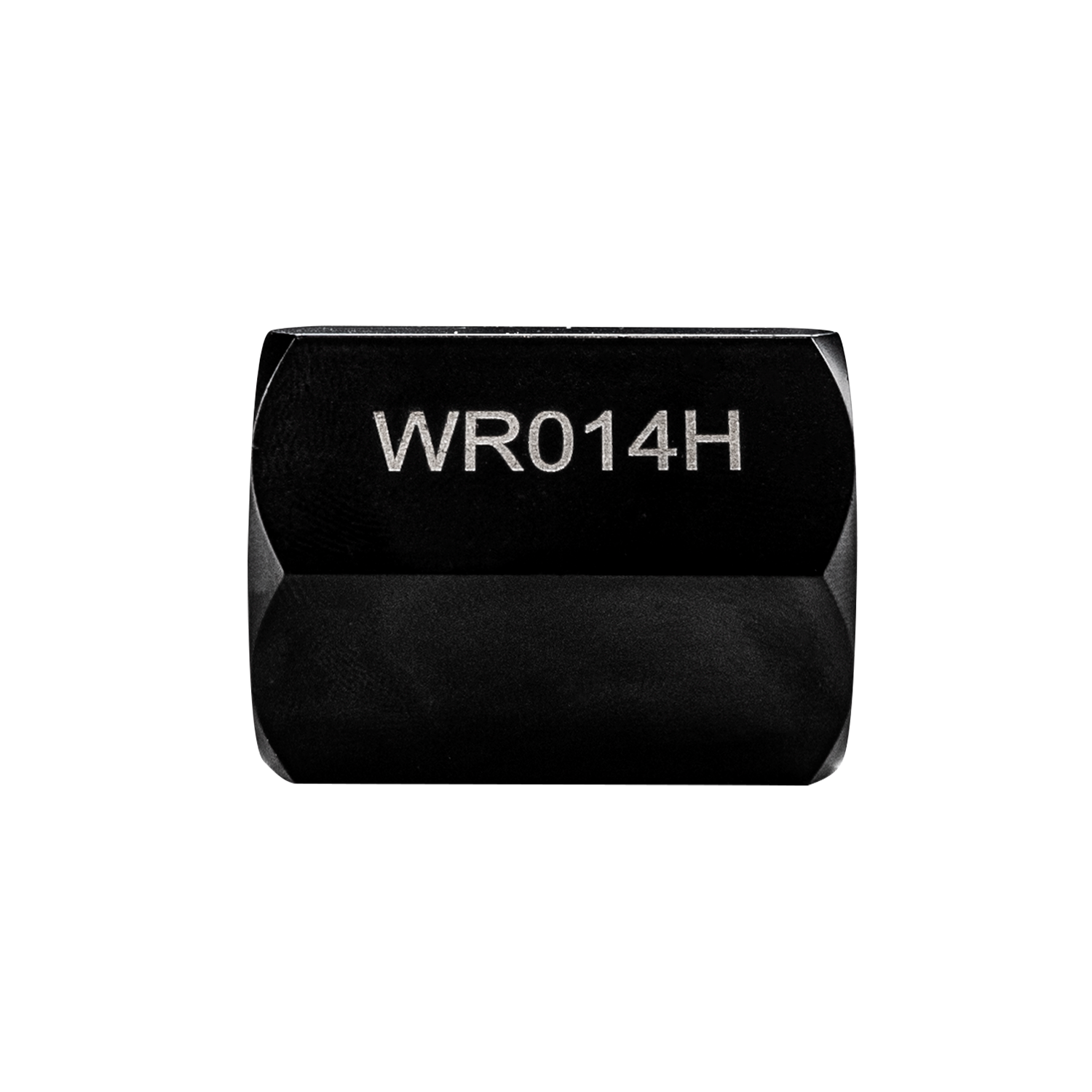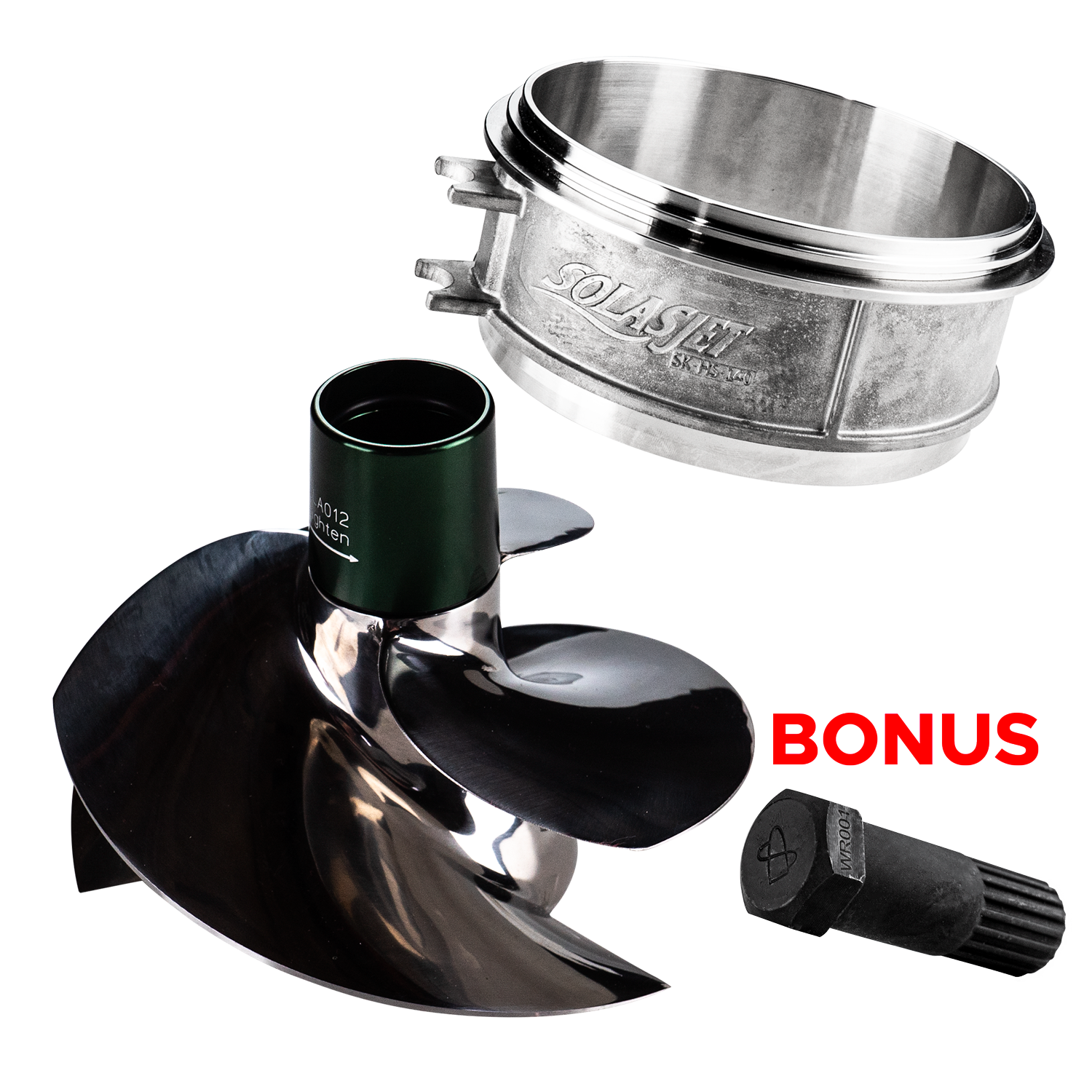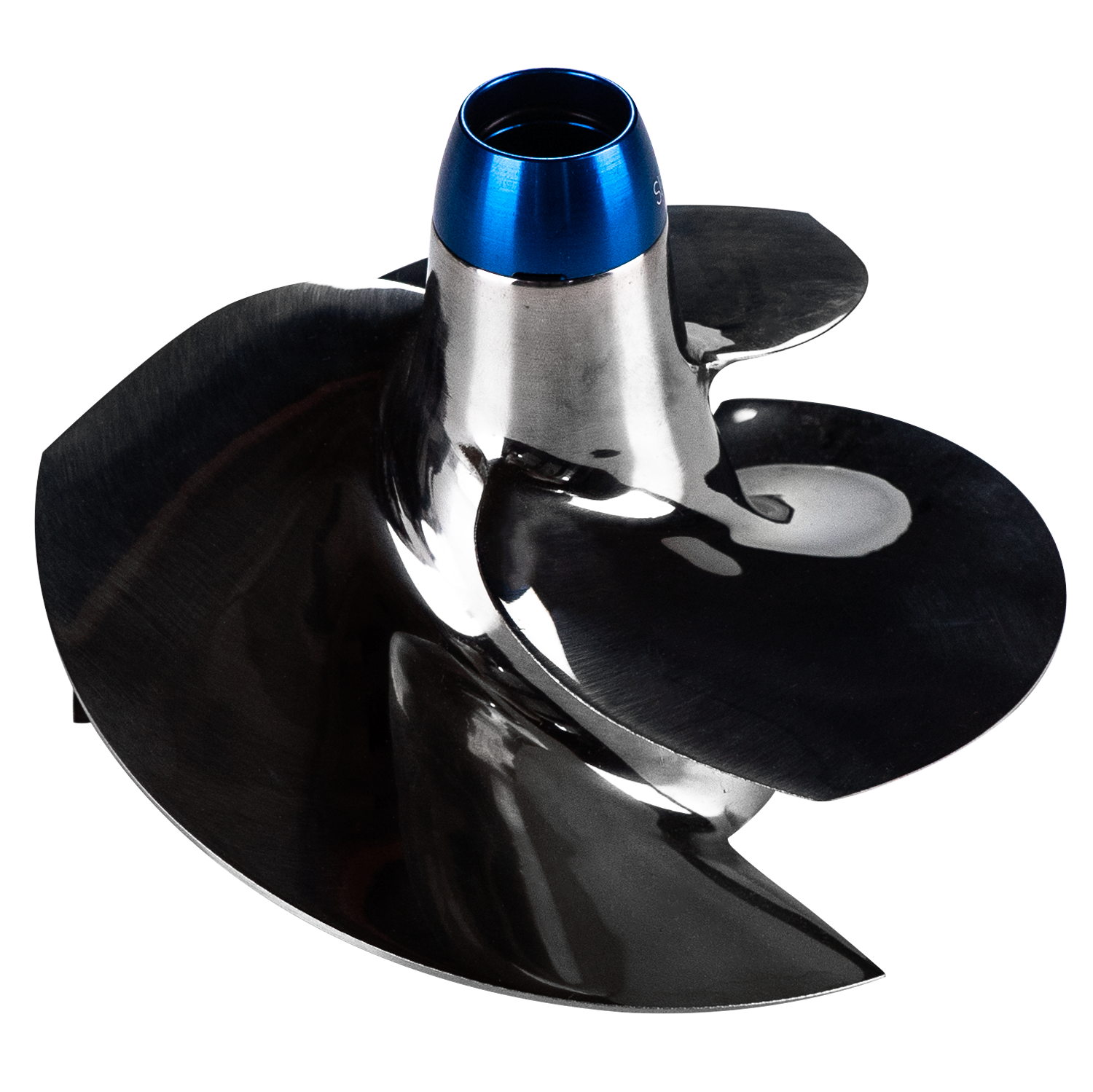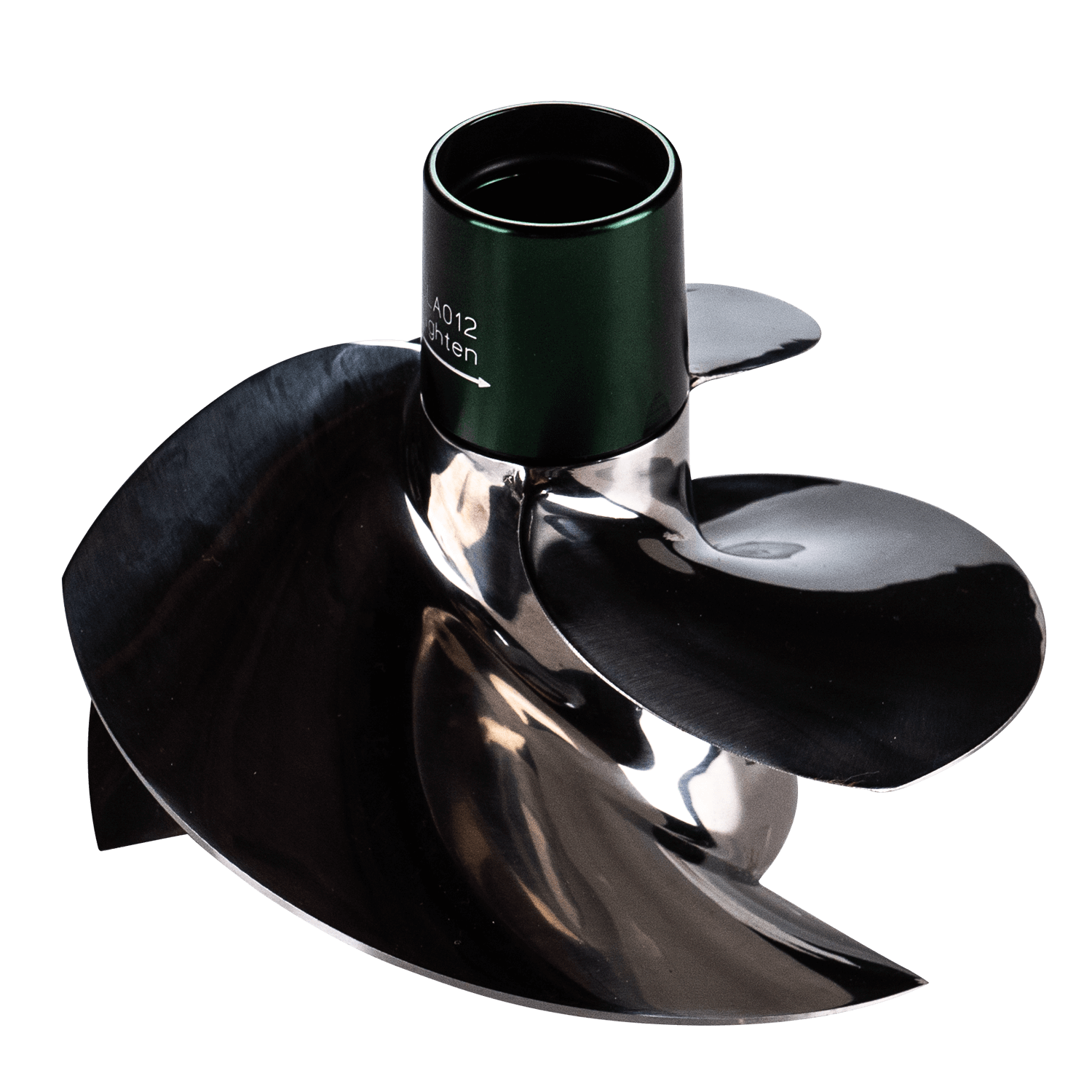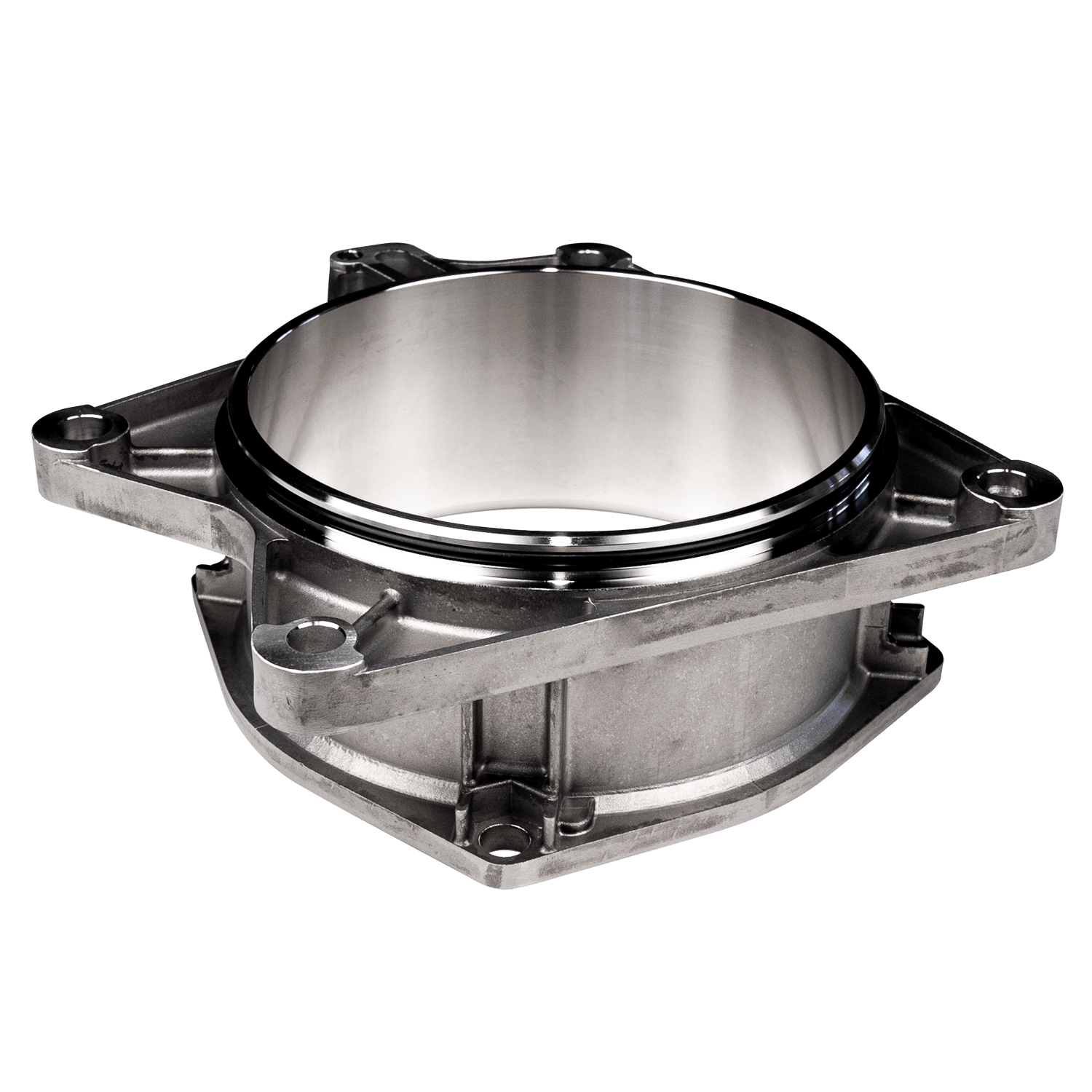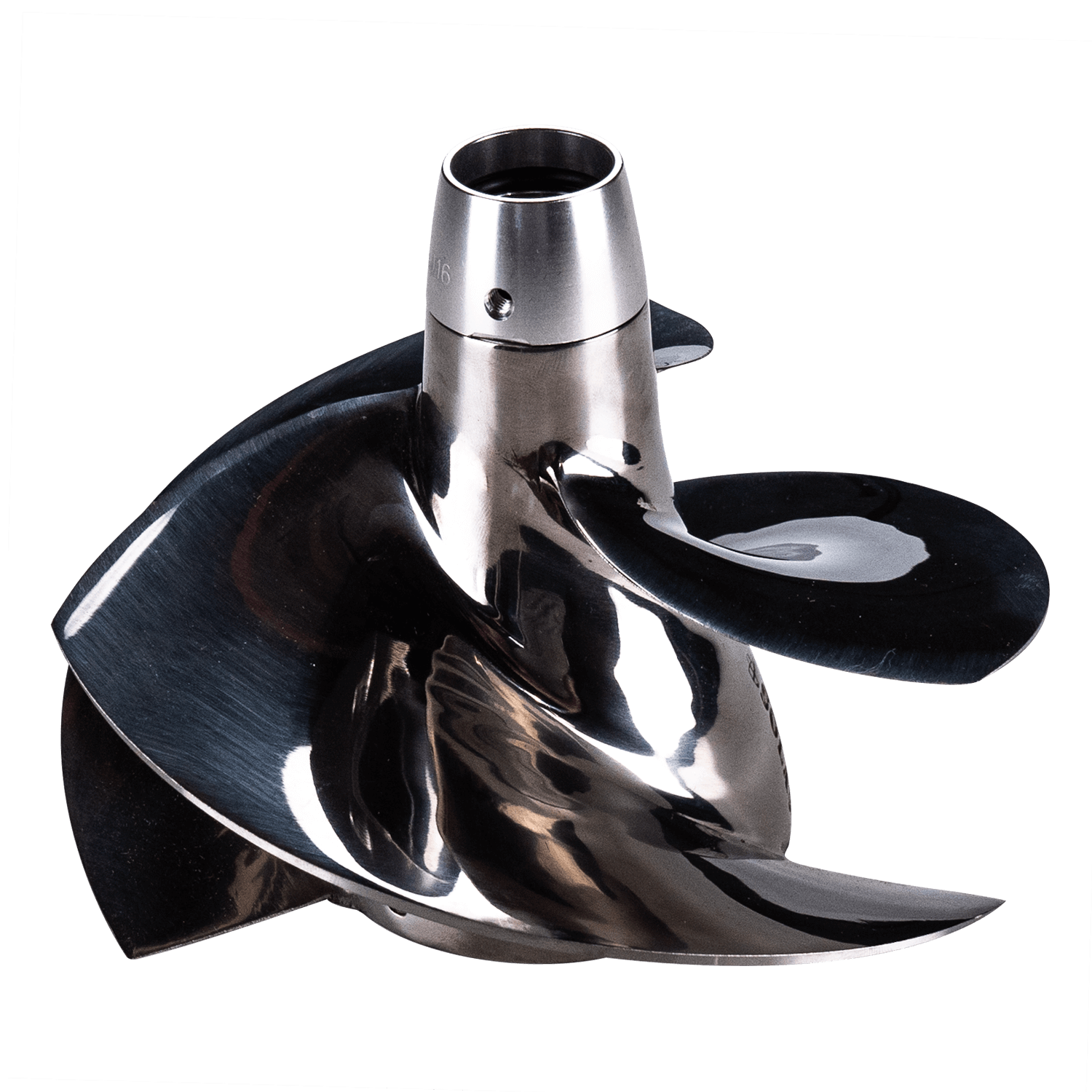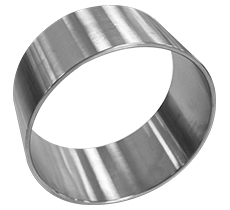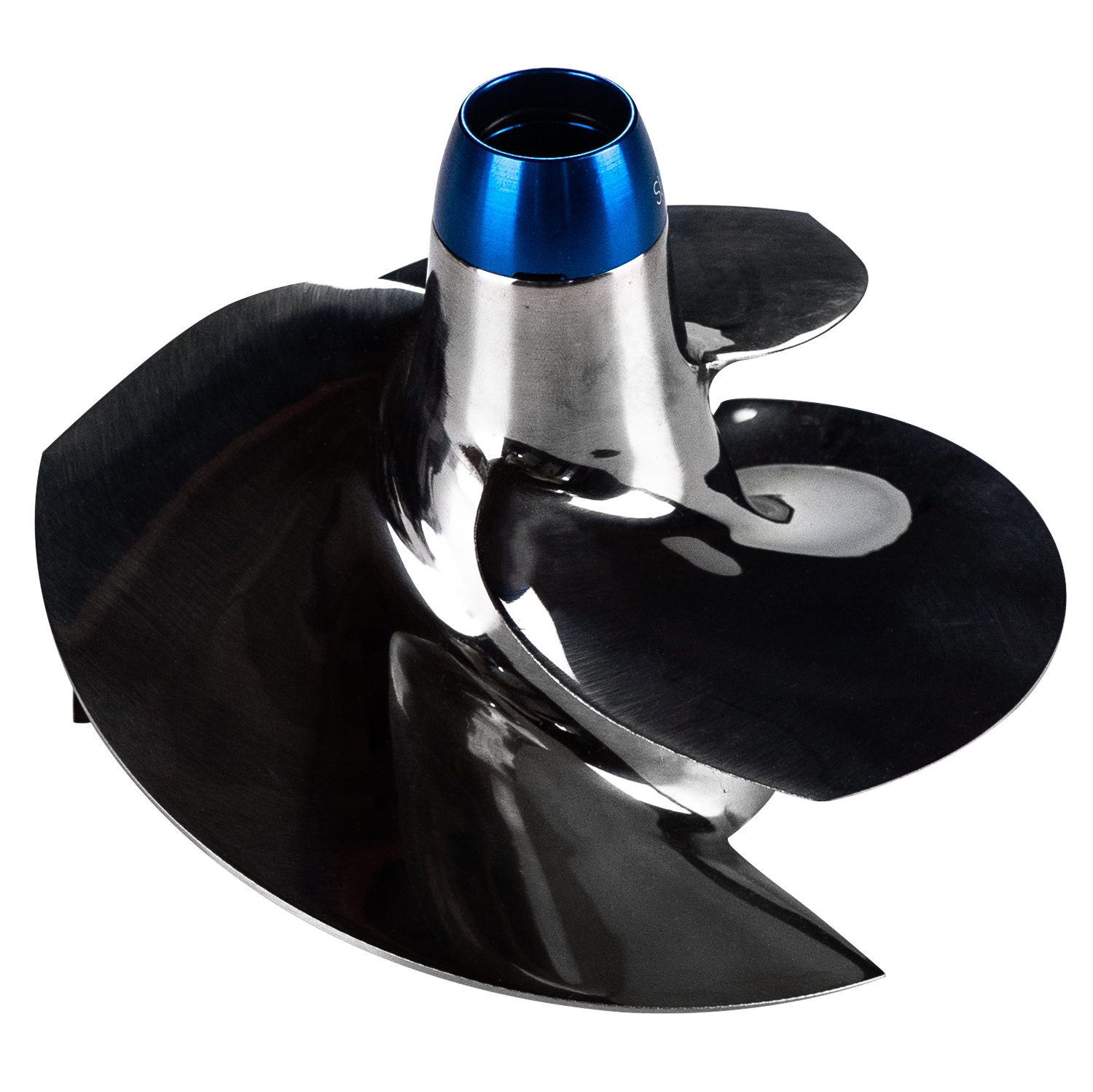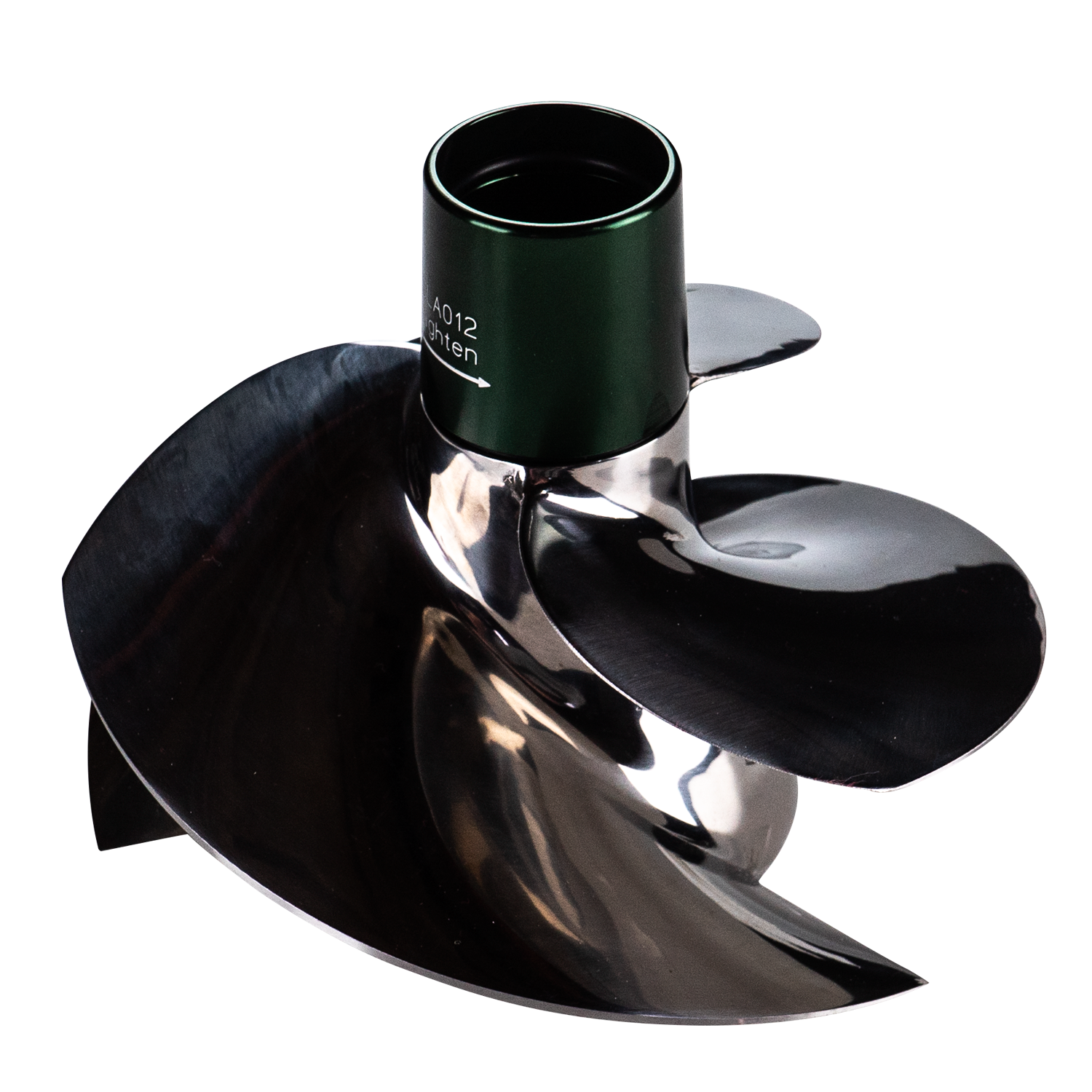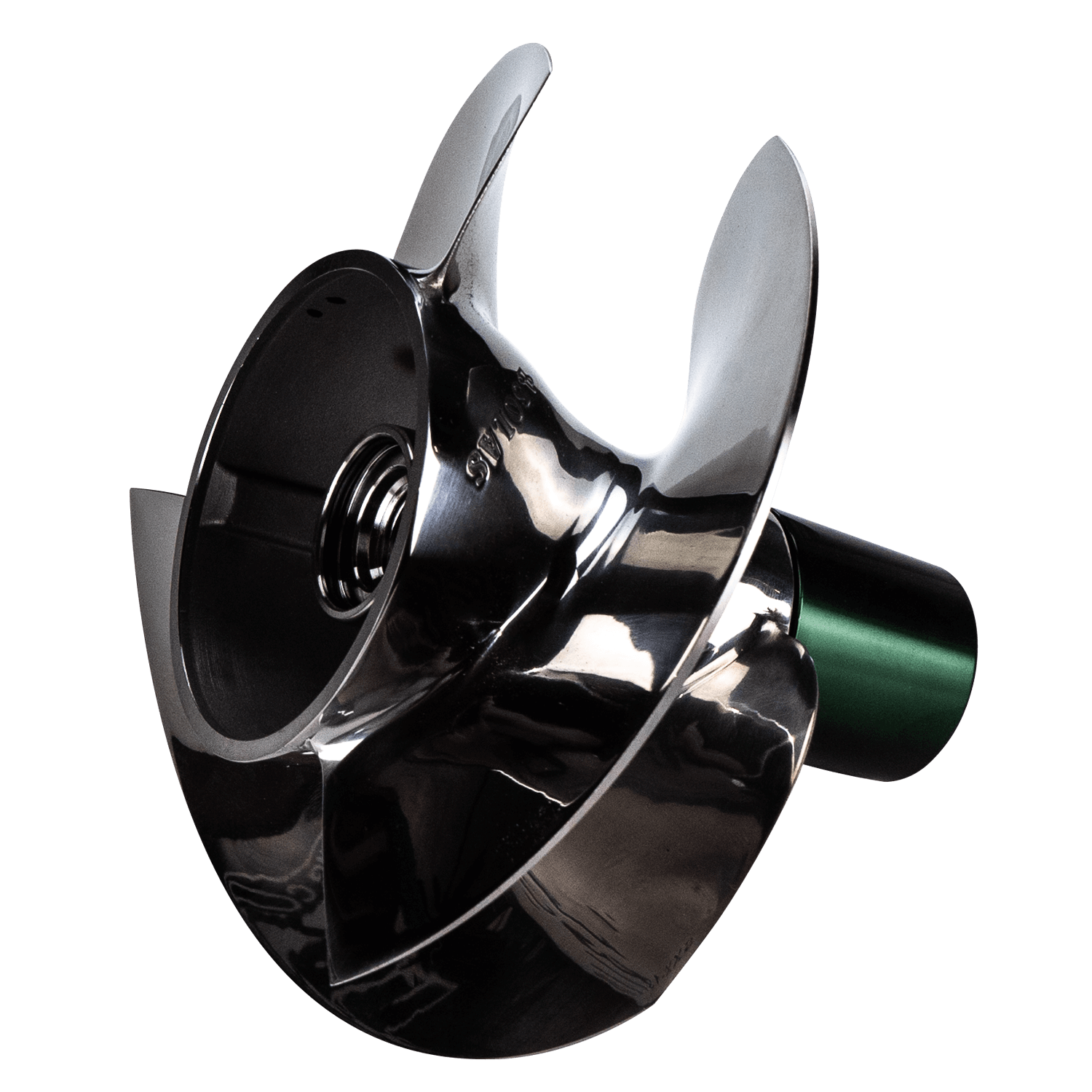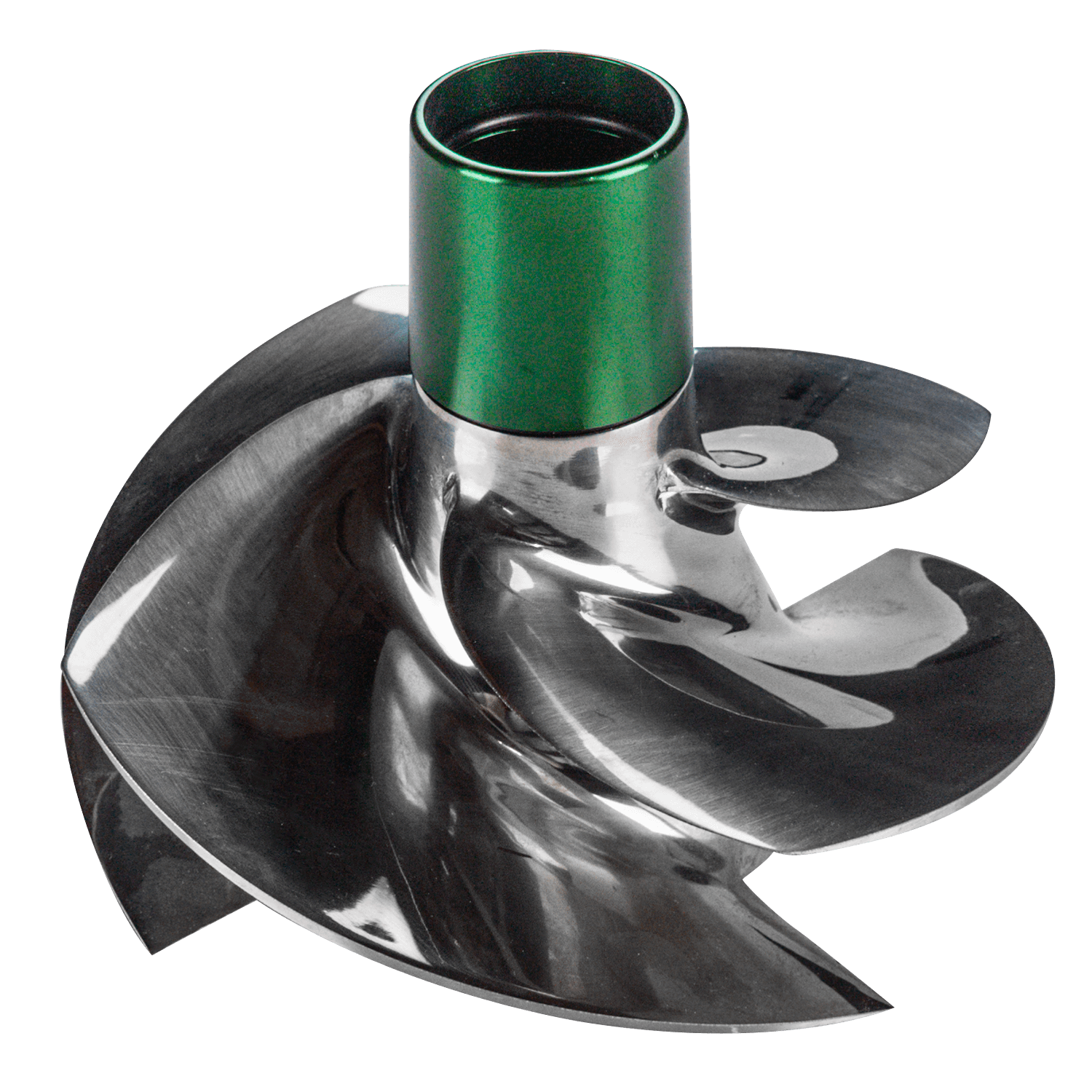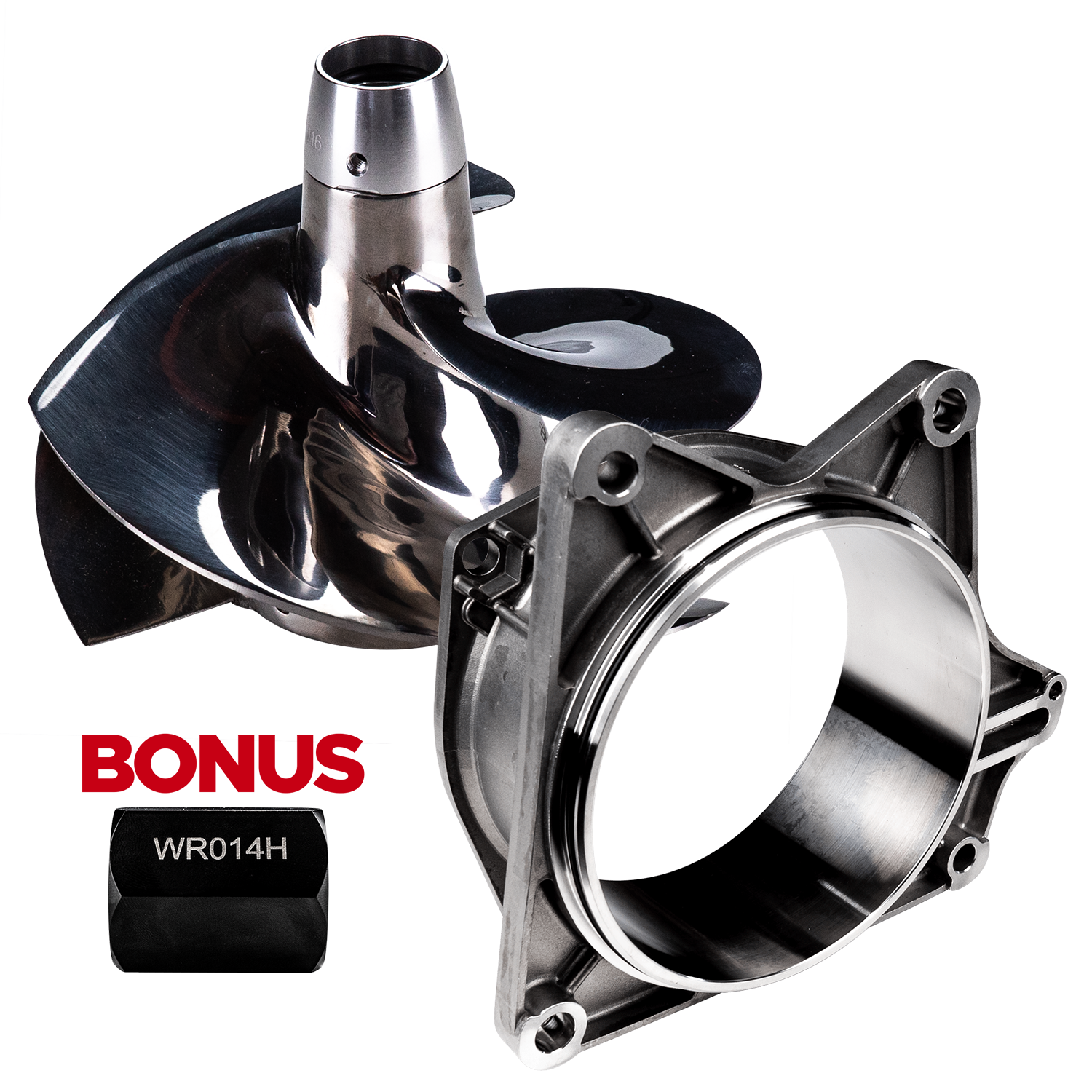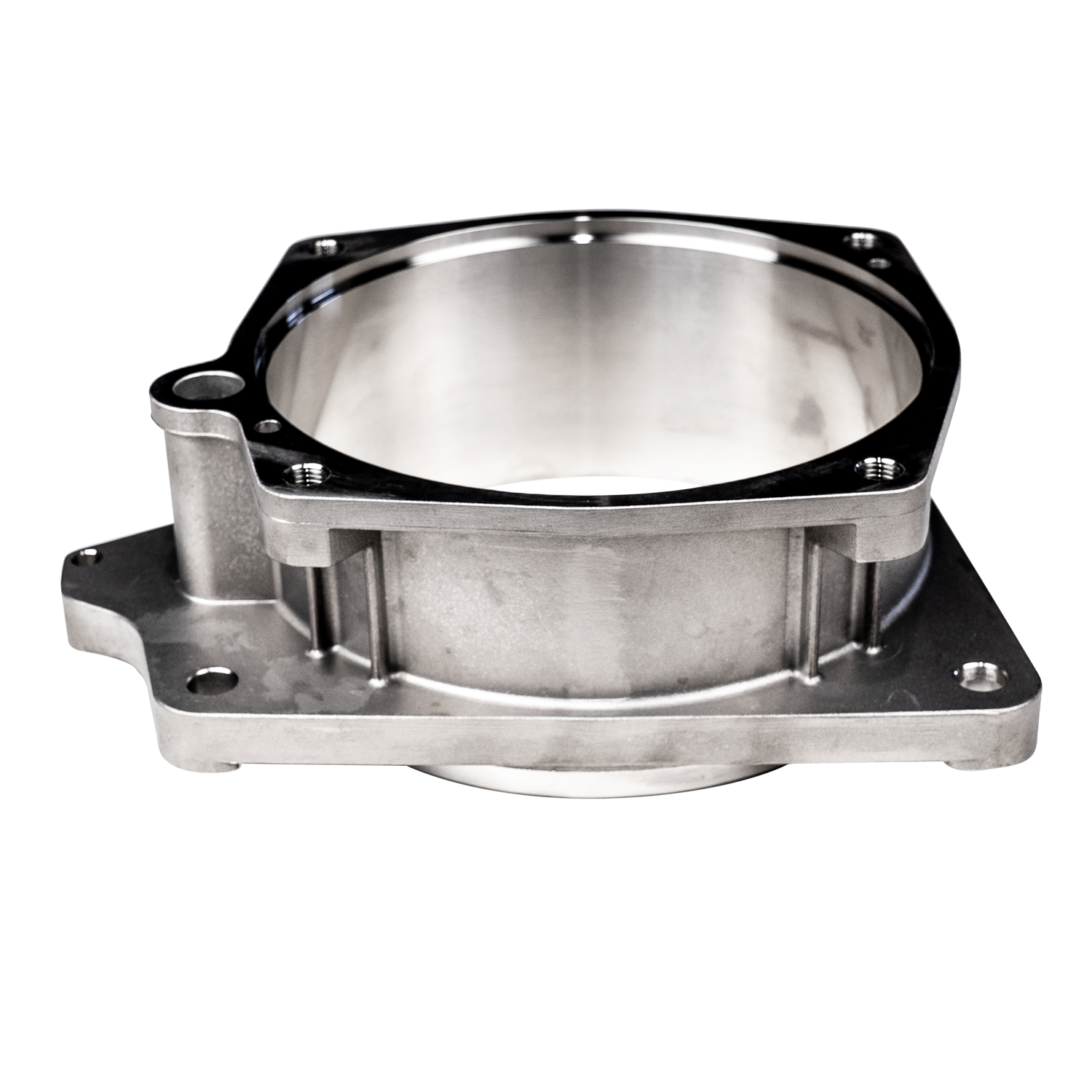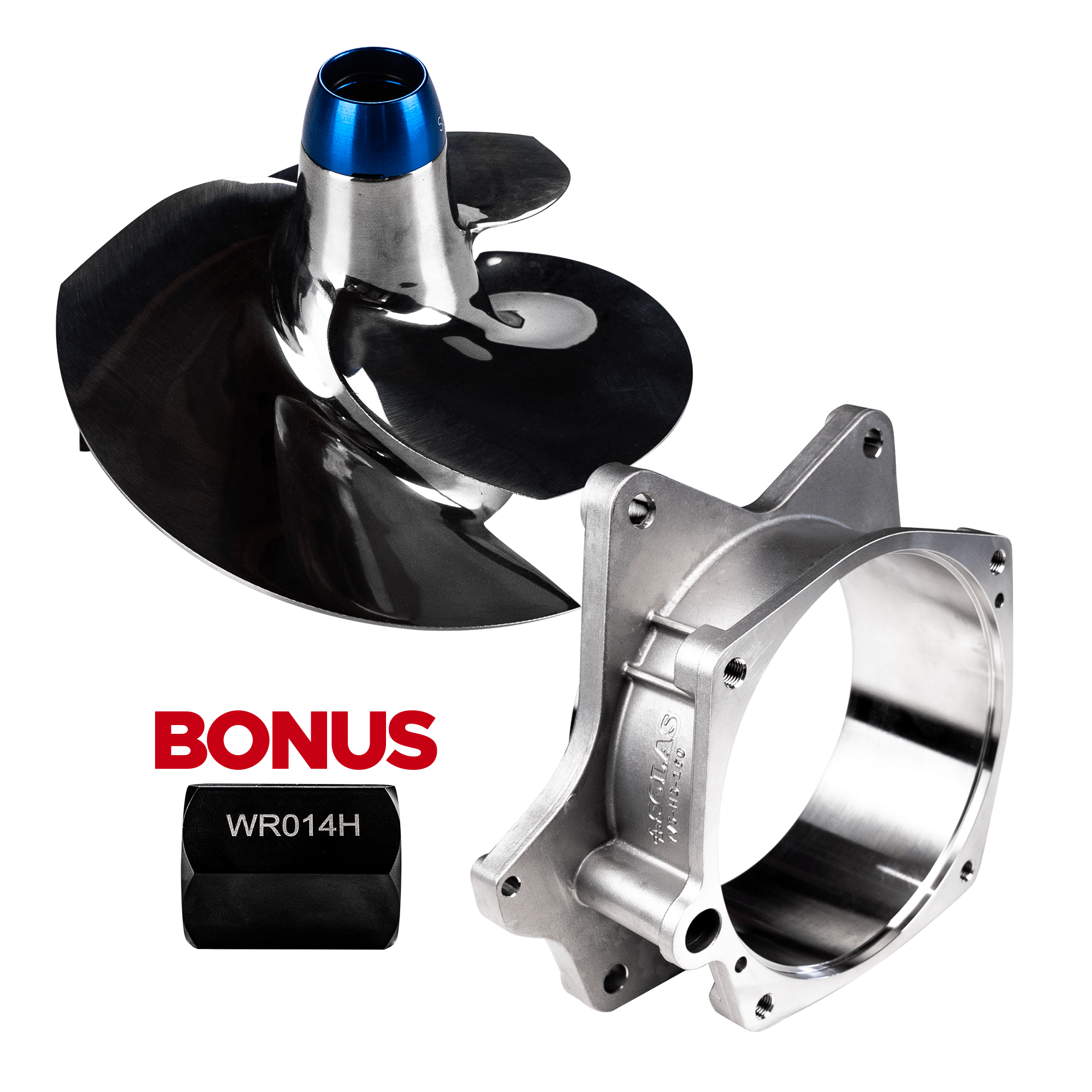How to choose a jetski impeller
When it comes to getting the most out of your PWC, few components make as much of a difference as the impeller — and more specifically, its pitch. At Worx Racing, we live and breathe performance, and helping riders understand how pitch affects their ski is a big part of what we do.
What Is Impeller Pitch?
Think of impeller pitch like the gears in your car. It refers to the angle or curve of the blades on your impeller and determines how far your ski moves forward with each rotation of the impeller. It's measured in degrees — and even a slight change can have a noticeable impact on acceleration, hook-up, and top speed.
A lower pitch (e.g., 10/18) lets your ski rev higher more quickly, giving you explosive holeshot and quicker acceleration. On the flip side, a higher pitch (e.g., 12/20) provides more resistance, which can reduce RPM but deliver better top-end speed.
How does Impeller Pitch Affects Engine RPM?
Your impeller plays a huge role in determining how your engine revs. A lower pitch impeller allows the engine to spin faster (higher RPM) under load, making it easier to reach and hold peak revs. This is great for acceleration and holeshot, especially when paired with performance tunes or bolt-on upgrades.
In contrast, a higher pitch impeller creates more load on the pump, which can reduce engine RPM. While this can help with fuel efficiency and top speed in the right conditions, it may bog the ski down if the engine isn't producing enough power to turn it effectively.
This is why pitch must match your setup. Install a high-pitch impeller on a stock ski and you might never hit your optimal RPM range. Go too low on pitch with a high-powered setup and you could hit the limiter too early, leaving speed on the table. It’s all about matching pitch to power — and that’s where the right tuning and testing comes in.
Are Solas impellers better than stock?
While OEM impellers do the job just fine, Solas impellers are in a different league when it comes to serious performance. Here’s why:
-
Stronger Materials:
Solas impellers are made from precision-cast stainless steel, making them far more durable and resistant to cavitation and damage than the plastic, cast aluminum or composite blades often used in stock impellers. -
Performance-Driven Design:
Every Solas impeller is designed with high-performance in mind — optimised blade geometry, tighter tolerances, and more efficient water flow mean better hook-up, quicker acceleration, and improved fuel efficiency. -
More Options, More Control:
Solas offers a wide range of pitches to suit your specific riding style and modifications. Whether you're into racing or rec riding, there's a Solas impeller that can be dialed in to match. -
Built to Handle Mods:
Stock impellers often struggle when you start adding power mods. Solas impellers are designed to keep up — especially when paired with upgrades like our Worx ECU tunes and intake grates.
Bottom line? If you're serious about performance, a Solas impeller is a no-brainer upgrade over stock.
Dialing It In – Why does custom pitching matter?
No two skis are the same. Fuel load, rider weight, modifications (like tunes or exhaust), and even water conditions can influence how your ski reacts. That’s why testing and fine-tuning pitch is often necessary. In fact, it’s not uncommon for riders to "de-pitch" or rework the impeller slightly to suit their setup.
At Worx, we recommend working with a trusted jetski mechanic or performance shop to get this spot-on. Installing the right impeller is one thing — but dialing in the pitch to match your exact ski and riding style is where the magic happens.

